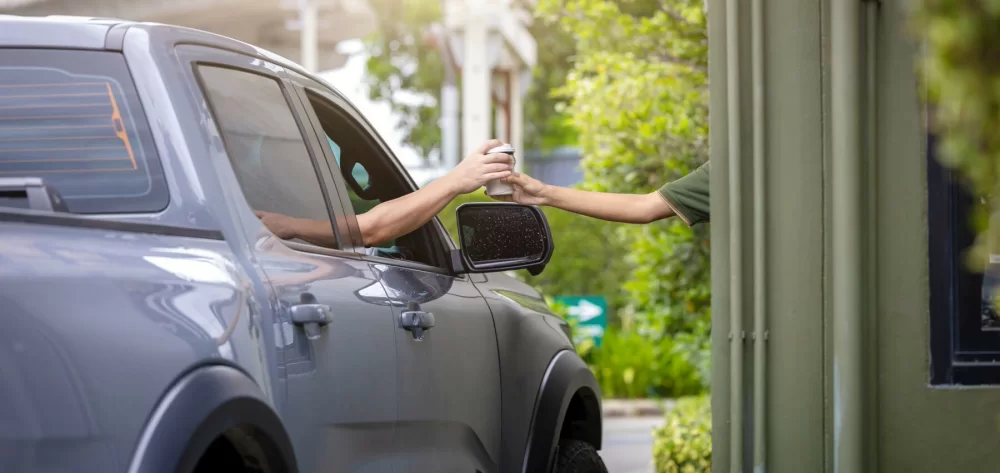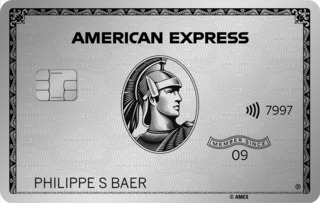What are in-car payments?
In-car payments are cashless payments for various kinds of purchases that are paid using a vehicle’s onboard computer. They make it possible to pay without having to leave your car or wait at a till.
How do in-car payments work?
Some modern cars can be fitted with a SIM, enabling their built-in computers to connect to the Internet. The information required to make use of certain services is transferred through this Internet connection. In-car payments also make use of this Internet connection.
An increasing number of service providers provide driver-centric services over the Internet. Drivers can, for example, choose to use in-car payments to pay for fuel, and have the navigation system guide them to gas stations that accept this form of payment. This is possible because the car’s GPS coordinates are shared over the Internet. However, the driver still has to enter which pump they will use to tank on the car’s screen.
In order to use in-car payments, you have to open a user account with your car’s manufacturer. You then have to link a debit card or credit card to this account. Purchases that you pay for using in-car payments are billed to the linked debit card or credit card.
Some car makers require you to also link your card to separate apps (parking fee apps or charging station apps, for example) in order to make certain kinds of purchases. That increases the initial time and effort required.
How are in-car payments different from mobile payments and other payment methods?
Some of the functions available by in-car payment systems are also offered by mobile payment services. For example, you do not necessarily need in-car payments to pay at parking meters without cash, because there are numerous mobile apps that can do this. In Switzerland, the Twint app is widely used for this purpose.
There are also mobile apps that enable you to tank at gas stations without having to pay at the till or at the pump. The Ryd app is one example.
What is required in order to use in-car payments?
A number of requirements must be met in order to use in-car payments:
- A compatible vehicle: The car has to support in-car payments, and be fitted with a screen that can be used to manage transactions. Additionally, this function must be enabled for use in Switzerland by the vehicle’s manufacturer.
- A mobile data plan: Depending on your vehicle’s manufacturer, you may have to subscribe to the car maker’s data plan in order to use in-car payments. These subscriptions are often referred to as connect plans.
- A user account: You have to create a user account for the car maker’s online services.
- A payment card: You have to link a payment method like a debit card or credit card to your account. Purchases are charged to the linked card.
Which payment cards can be used with in-car payments?
There is no clear answer because as of yet, only a few vehicle manufacturers offer in-car payments in Switzerland.
Currently, it can be assumed that most Swiss debit cards and credit card can be used. It is possible that additional payment methods like Twint may also be accepted in the future.
Which products and services can be purchased using in-car payments?
The selection of goods and services that you can purchase using in-car payments varies between car makers. Currently, there are relatively few options. But it is likely that the selection will be expanded if in-car payments gain popularity.
Currently, in-car payments can be used, to varying extents, for the following purposes:
- Functions on demand: Drivers can use their vehicles’ built-in screens to enable special features for their car, including things like voice control, automated headlight control, ambient lighting, remote climate control management, or navigation for a specific region.
- Pay to fuel: To pay for gas using in-car payment, you enter the pump number in the relevant field on your car’s screen, and then fill up as you would normally. Once you have finished, you can pay for the fuel directly on the car’s built-in screen.
- Electric vehicle charging: In-car payments can also be used to pay at public charging stations for electric cars.
- Pay for parking: In some countries, drivers can pay for parking directly on the car’s screen.
- Pay tolls: Highway and bridge tolls can be paid directly on the car’s built-in display.
Typically, in-car payment systems require you to authenticate each transaction using a separate smartphone. The newest Mercedes-Benz models have built-in fingerprint scanners. These enable in-car payments to be authenticated directly on the car itself via fingerprint, without needing an additional mobile phone.
Other purchases which could likely be paid for with in-car payments in the future include:
- Drive-through restaurants: Drivers could place their orders and pay for them using the car’s built-in screen while buying food at restaurant drive-throughs.
- Bookings at restaurants, hotels, and other service providers: Drivers could use in-car payments to make reservations and bookings at restaurants, hotels, and many other service providers.
In principle, it can be assumed that drivers will be able to make purchases from many different merchants using their cars. But that will only happen if in-car payments become widely adopted.
Can Swiss drivers already use in-car payments?
Car makers are currently busy developing their in-car payment services. Functions on demand – optional paid services for the car itself – are already offered by a number of car brands. The possibility to pay third-party merchants like gas stations is only offered by a handful of vehicle makers.
Which car brands offer in-car payments in Switzerland?
Many car makers already offer functions on demand.
Of the brands with a strong presence in Switzerland, only Skoda offers certain vehicle models with in-car payment systems that can be used to pay at gas stations. Mercedes-Benz vehicles purchased in Switzerland currently only let you make in-car payments at German gas stations. However, Mercedes-Benz plans to expand this service to include Swiss gas stations in the future.
BMW, Mercedes-Benz, and Skoda, already let you pay for parking using the built-in display. BMW and Skoda also support in-car payments for charging stations for electric vehicles. In the case of BMW, though, the bill for recharging your car is not charged to the card you linked to the in-car payment system. Instead, an external app is required, and you have to link your payment card in that app separately. This requires more initial time and effort.
Car makers Audi, Seat, and Toyota do not currently offer in-car payments in Switzerland. Hyundai does not currently offer in-car payments. In the future, Hyundai owners should be able to pay for charging and parking using H-Pay. Whether Ford and Tesla offer in-care payments is not known, and these carmakers did not respond to moneyland.ch inquiries.
Which gas stations accept in-car payments?
Only relatively few Swiss gas stations are equipped to accept in-car payments. You can find gas stations that accept this form of payment using your car’s screen interface.
At this point in time, Skoda drivers in Switzerland can pay at gas stations equipped for in-car payments directly on the onboard computer. Mercedes-Benz owners can only use in-car payments at gas stations in Germany, but this service will be extended to include Switzerland in the future.
BMW has future plans for an app that its customers can use to pay for gas. This app would be powered by a third-party partner company, and BMW owners will have to link their credit or debit card to that account separately.
Which electric vehicle charging stations accept in-car payments?
Most public charging stations for electric cars already have the option of settling payments via special mobile apps. Theoretically, these charging stations should be able to accept in-car payments without needing any alterations, as long as your car supports them. Audi, BMW, Mercedes-Benz, and Skoda already give you the option of paying for electric charging directly on the car’s screen. But with all four of these carmakers, the cost is not billed to the credit card or debit card that you link to your carmaker’s user account. Instead, you have to link your payment method to a separate app. Mercedes-Benz requires you to agree to a separate contract in order to use this service.
What do in-car payments cost?
Currently, carmakers do not charge any transaction fees for in-car payments. There are only the possible fees charged by the issuer of your linked credit card or debit card.
Which fees apply when you use in-car payments to pay merchants outside of Switzerland is not clear. Skoda simply writes that possible currency exchange rates are not set by Skoda itself.
Depending on which brand of car you use, you will also have to pay for the car’s mobile data plan. Volkswagen charges either 65.90 or 139 francs for its annual subscriptions.
Can I use in-car payments when traveling outside of Switzerland?
You can use in-car payments to pay outside of Switzerland as long as the merchants you want to make purchases from are technically equipped to handle them. However, this is only possible if your car’s manufacturer offers this service in the country you are traveling through.
The exact terms and conditions for using in-car payments abroad are not yet known. But it is very likely that the foreign transaction fees that apply to your linked debit card or credit card will also apply to in-car payments. It is also likely that your card issuer’s currency exchange rates will be used for currency conversions, and these rates differ between Swiss card issuers. Whether or not carmakers will also charge additional fees, which would add another cost, is not yet clear. It is possible that the terms and conditions will vary between car brands.
What are the advantages of in-car payments?
The biggest advantage of in-car payments is that you can handle payments right on the built-in screen, without having to leave your car, which can be more convenient. Payments are processed directly. It is best to view in-car payments as just one feature in your carmaker’s digital services bundle.
However, many purchases like those from gas stations, electric vehicle charging stations, and parking meters, can already be handled using mobile apps. These apps can be used with any vehicle model, from any manufacturer. The added value of in-car payments above what you get with mobile apps is fairly small.
What are the risks of in-car payments?
Experts are skeptical about the concept of vehicles that are permanently connected to the Internet. There are concerns that criminals will be able to misuse the constant mobile data connection. In an extreme example, it may be possible for a hacker to unlock, power up, and drive away with a car.
In-car payments may also be problematic when vehicles are borrowed or shared. It is unclear whether a person who borrows a car can be prevented from using the vehicle to pay for purchases.
Sellers and buyers of used cars should also exercise caution. As a seller, you will have to make sure to completely remove all connections and permissions related to in-car payments so that the car can no longer be used to make payments.
More on this topic:
Compare car insurance premiums now
Compare Swiss credit cards now
Tips for cutting your car insurance costs
Saving tips for car owners in Switzerland

 Deal of the Day
Deal of the Day 



